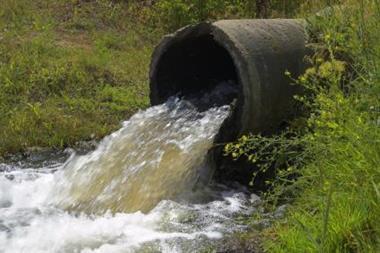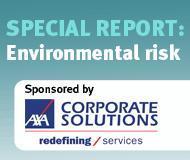The Environmental Liability Directive has brought with it a new urgency to take environment risk seriously. Despite other financial pressures, companies can’t afford to let green issues slip down the priority list
Gone are the days when companies could go about their business with little regard or respect for the environment.
The public is no longer willing to accept environmental damage as a cost of doing business and this is increasing calls for compensation in the event of environmental destruction. The clearest manifestation of this trend is the EU’s Environmental Liability Directive (ELD).
“Businesses that fail to assess their impacts and dependencies on biodiversity carry undefi ned risks and may neglect profi table opportunities,” claimed a recent report by the G8 and fi ve major developing economies.
Yet, worryingly, a review in 2008 by PricewaterhouseCoopers of the 100 largest companies in the world found that only 18 of them mentioned environmental biodiversity in their annual reports. Of these, only six reported action to reduce their impact on the environment and just two identifi ed the environment as a key strategic issue. The concern is that, faced with a shocking fi nancial slowdown, businesses have taken their foot further off the gas when it comes to environmental initiatives.
Green issues dropped four places in Ernst & Young’s annual risk report (see box), which lists what fi rms see as the top business risks they are currently facing. “In the current economic climate, environmental issues are not at the top of the agenda, and have slipped down the rankings this year,” read the report. BP – a lesson in consequences
A big part of corporate environmental consciousness is being prepared to deal with the consequences of pollution or environmental degradation when things do go wrong, and not just walking away from it. The clean-up costs associated with BP’s disastrous Gulf of Mexico oil spill are expected to come to around $32bn (€24bn). The company has set aside $20bn to pay compensation claims alone.
Most companies would be crippled by environmental liabilities of this magnitude. Even BP, which has huge cash reserves, has been forced to announce plans for an asset sell-off to raise around $8.7bn to help pay the liabilities.
Furthermore, as part of the clean-up, BP has been forced to mobilise a fl eet of ships to begin scooping up the huge oil slick, as well as an army of people to help clean up the oil as it washes ashore.
This is not to mention the scale of the engineering project under way at tremendous depths in the Gulf to plug and permanently block the well (see our infographic on pages 28-29). The incident is a shocking illustration of how costly environmental disasters can be.
There is a growing environmental insurance market in Europe designed to help companies deal with the costs of environmental clean-up operations, and a majority of countries report stable conditions despite economic problems and rising liabilities. That’s not to say that any of the risks faced by BP would have
necessarily been insurable, because of the sheer magnitude of BP’s exposure.
The ELD is leading to increased awareness of and interest in specialist environmental cover, particularly in Denmark and Spain, reported Marsh in its latest global insurance market outlook.
The environmental insurance market is expected to remain relatively stable over the next six months, Marsh says. There are, however, exceptions. In France, for example, environmental liability insurance has recently become more expensive – some policies have
increased in price by 10%-20%. This is mainly due to the fact that risk managers are seeking extended cover, which includes damage to biodiversity, on site clean-up costs and business interruption.
“On the whole, the loss ratio is continuously increasing for environmental liability insurers and it is expected that there will be slight upward pressure on rates for the next six months,” Marsh stated in its outlook for France.
In Italy, on the other hand, rates for environmental liability insurance declined marginally in 2009 and this trend is expected to continue over the next six months.
Change is in the air The new environmental liabilities brought about by the ELD have created a new market for commercial insurance companies practically overnight. In Greece, for example, only two insurers are known to provide environmental liability cover locally and there has been little interest in the cover to date. Now that the ELD has been implemented in Greece, interest in specialist environmental products is expected to take off.
There is also growing interest in underwriting environmental risks through a captive. Almost 60% of respondents to Aon’s 2009 Global Risk Management Survey expressed an interest in underwriting environmental risks this way.
Despite the business climate, more and more companies are beginning to recognise the economic benefi t of being environmentally aware. Rio Tinto, for example, reports on its website on the relative biodiversity value of its mining sites, the amount of land in proximity to biodiversity-rich habitats and the number of plant and animal species of conservational signifi cance within each land holding.
As Pavan Sukhdev, a leader in the UN’s Green Economy Initiative, says, the loss of biodiversity “leads to serious human and economic costs, which are being felt now, have been felt for much of the last halfcentury, and will be felt at an accelerating pace if we continue ‘business as usual’”. The business community must not abandon its commitment to the environment in the face of a tricky trading environment. ¦



















